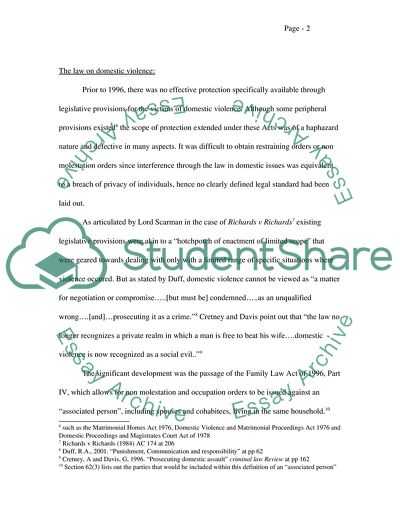Cite this document
(Domestic Violence Essay Example | Topics and Well Written Essays - 2500 words, n.d.)
Domestic Violence Essay Example | Topics and Well Written Essays - 2500 words. https://studentshare.org/law/1705972-law-crimejusticesociety-criminal-justice-system-has-long-failed-to-deal-adequately-with-violent-conduct-occuring-in-private-relationships-the-domestic-violen
Domestic Violence Essay Example | Topics and Well Written Essays - 2500 words. https://studentshare.org/law/1705972-law-crimejusticesociety-criminal-justice-system-has-long-failed-to-deal-adequately-with-violent-conduct-occuring-in-private-relationships-the-domestic-violen
(Domestic Violence Essay Example | Topics and Well Written Essays - 2500 Words)
Domestic Violence Essay Example | Topics and Well Written Essays - 2500 Words. https://studentshare.org/law/1705972-law-crimejusticesociety-criminal-justice-system-has-long-failed-to-deal-adequately-with-violent-conduct-occuring-in-private-relationships-the-domestic-violen.
Domestic Violence Essay Example | Topics and Well Written Essays - 2500 Words. https://studentshare.org/law/1705972-law-crimejusticesociety-criminal-justice-system-has-long-failed-to-deal-adequately-with-violent-conduct-occuring-in-private-relationships-the-domestic-violen.
“Domestic Violence Essay Example | Topics and Well Written Essays - 2500 Words”. https://studentshare.org/law/1705972-law-crimejusticesociety-criminal-justice-system-has-long-failed-to-deal-adequately-with-violent-conduct-occuring-in-private-relationships-the-domestic-violen.


